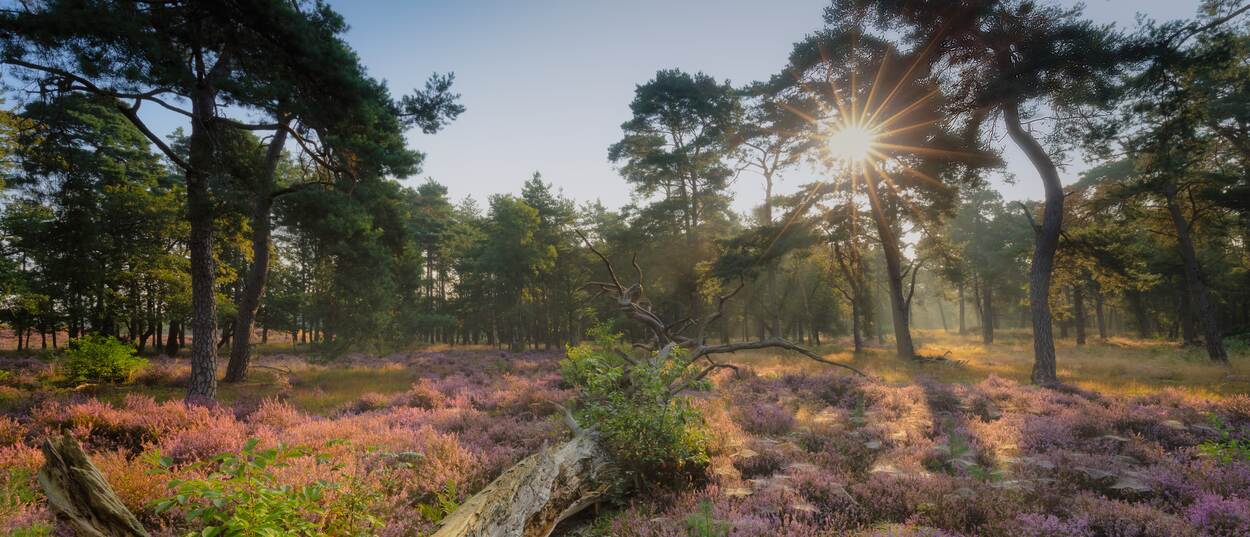Outlook photo themes
Each Outlook is decorated with beautiful photos of the Netherlands, following a specific theme. These photos can be found all over this website. Here you can find an overview and explanation of the themes of the past years, and the corresponding photos.
2025: Dutch ∆ Deltas
The Outlook 2025 theme is Deltas in the Netherlands, or Dutch ∆ Deltas.
Deltas ∆ surround us in various forms, reflecting both the ever-shifting dynamics of financial markets and the broader Dutch economy. For instance, once-noticeable distinctions between AI-generated and real images in last year’s Outlook publication have now become nearly invisible, underscoring the ever-accelerating advancements in generative technology. Our athletes broke new records at the Olympic Games in sailing and marathon events, setting new deltas in performance. The Netherlands’ new government, now at the helm for nearly six months, navigates its share of challenges within a complex landscape. Meanwhile, one of the warmest and wettest springs on record reminds us of the ongoing work of our government agencies as they prepare for variable conditions, such as serious floods and prolonged droughts. Last year, we explored the New Horizons we would encounter in 2024, and as we approach the end of the year, it is evident that change ∆ continues to shape our path.
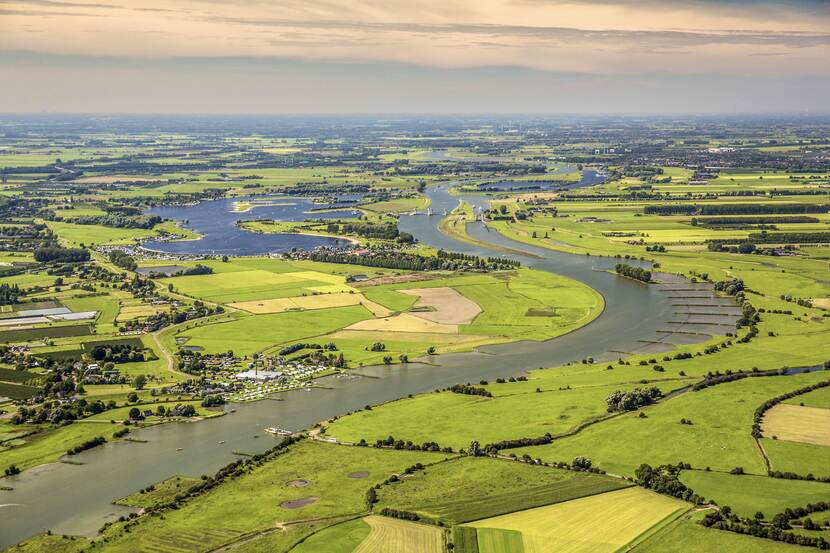
2024: New Horizons
New Horizons is the photo theme for the Outlook 2024. As we move forward into the future, the impact of artificial intelligence has begun to emerge in many fields, including art. In the Outlook 2024, alongside traditional photographs, you will also discover works created by generative AI, reflecting this evolving landscape. Beyond inspiring beautiful art, “New Horizons” is a boundless theme that looks forward to new possibilities, new opportunities, and new vistas.

2023: Agility
The photos featured in the Outlook 2023 portray Agility. Agility can be defined as the ability to move quickly and easily. In the modern age, the word’s meaning has expanded to project management, describing the ability to respond to change. In 2022, change was all around us. Amidst unpredictability in our funding need and global uncertainties, the Dutch State Treasury Agency (DSTA) remains committed to its mandate of financing the state debt in a transparent and consistent manner. So, what does it mean to display agility for the DSTA and the Netherlands? As we strive to be an agile organisation, we can be inspired by examples from the world around us.
This Outlook illustrates examples of everyday agility. Dutch animals in nature like the buzzard are tremendously nimble flyers. Newcomers such as the wolf must adapt to survive their new and changed habitats. Athletes express agility at the highest levels, and Dutch innovators are constantly designing and building new technologies to help mitigate climate risk. For a sailboat, any plan made before setting out on a journey must be adapted to the prevailing circumstances in order to arrive at the destination. As we navigate this changing world together, the DSTA will show a permanent investment in its agility, responding to change by innovating wherever possible and maintaining our close relationship with the market.

2022: Energy
The photos featured in the Outlook 2022 portray Energy. This Outlook illustrates multiple kinds of energies resulting in a variety of beautiful photos. Often the word energy is connected to energy consumption. Energy is generated and transformed into electricity with which devices can be charged and buildings can be lighted. It is also used to power transportation means such as trains and cars. The society is currently amidst a transition in which fossil energies such as coal, gas and oil are being replaced by cleaner and more sustainable variants. In a few decades, it is very well possible that the world operates in an energy neutral way. Planes may fly on sustainable fuel, electric cars may be charged with solar electricity and buildings might be heated with geothermal energy. Furthermore, off-shore wind energy in combination with hydrogen can possibly ensure countries such as the Netherlands of a constant energy supply. The word energy is also connected to the energy within people. People get energy from exercising, getting things done, having a good chat with a friend, a walk in the sun and the people around them. After a period of lockdown at the beginning of the year, people in the Netherlands felt a lot of energy when society reopened. Finally it was possible again to visit events or even dance in a club.

2021: Dutch Innovation
The year 2020 was marked by the outbreak of the COVID-19 pandemic, which has had an enormous impact on global health, the way our societies function and the global economy. To be successful in overcoming a crisis it helps to develop new methods of doing business and working together, and hence it often requires innovations. This will not only be the case for the COVID-19 pandemic, but also for other challenges like climate change. The photos in this Outlook show students, researchers and corporations in the Netherlands working on innovations which are expected to contribute to achieving results on relevant issues or that have done so in the past.
The other way around is also true, a crisis has many downsides, but one of the positive aspects is that it also brings along a momentum for change and innovation.
In the Netherlands, this momentum is amplified by the launch of the National Growth Fund. The government will invest € 20 bn in the upcoming 5 years in projects that will increase the future capacity for growth in the Netherlands. The financing will be allocated towards projects in the areas of knowledge development, infrastructure and research, development and innovation.
The photos in the Outlook 2021 portray innovations that originate from the Netherlands, innovations which currently take place or are being developed in the Netherlands and they portray areas in which the National Growth Fund aims to spark even more innovation in the upcoming years.
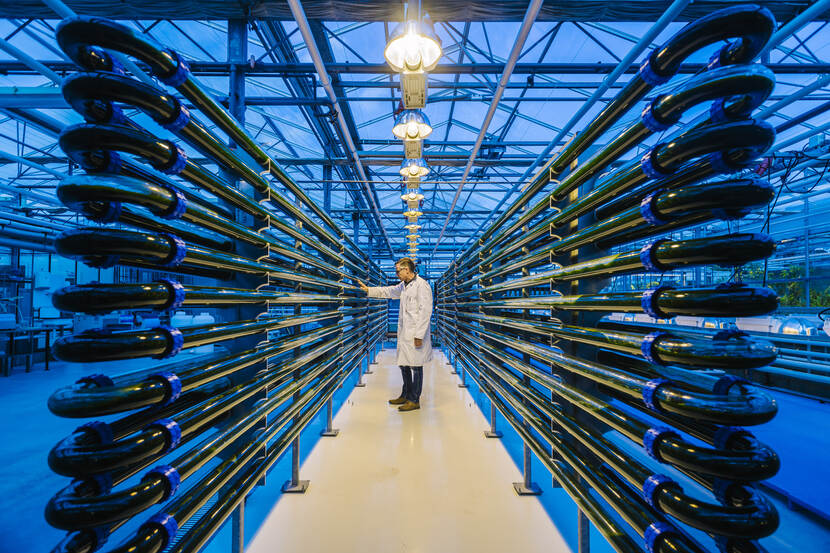
2020: Bridges
In 2019, the Dutch government concluded two far-reaching agreements in accordance with the traditional ‘polder model’: the Climate Agreement and the Pension Agreement. Both agreements connect and bind stakeholders in their desire to build bridges, to cross divides, towards a sustainable future.Closer to home, the DSTA acts as a bridge between the Ministry of Finance and the ‘markets of finance’. A continuous dialogue with our Primary Dealers and investors is essential for bringing together the most optimal strategy for managing the State’s debt and the needs and the preferences of market participants.One can build bridges by starting at each side, but one has to make sure both sides meet in the right place, somewhere in the middle. This is exactly what we did - through dialogue - when drawing up the DSTA’s new policy framework and the funding plan for 2020, which can be read in the Outlook 2020.
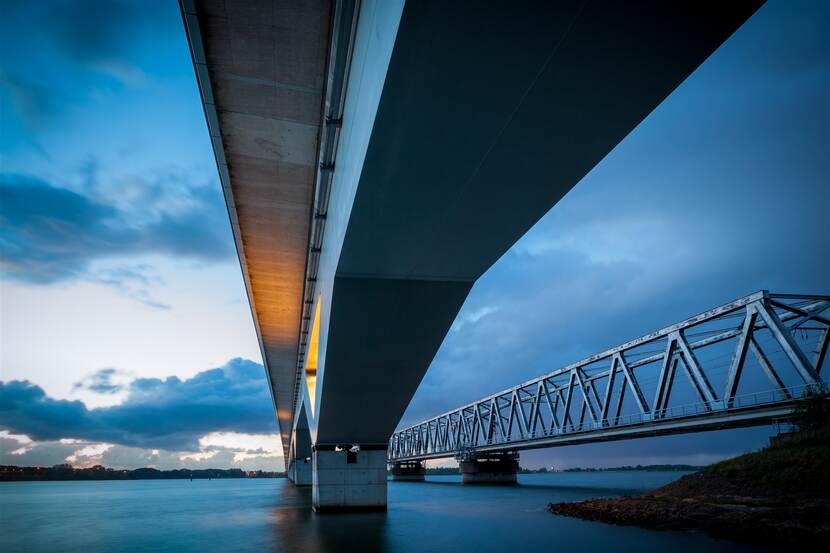
2019: Green
2019 Will be the year where the Dutch Government will issue its first Green government bond. The pictures in the Outlook 2019 give an impression of government projects and expenditures that are made and could be eligible for the proceeds of this green bond. Investments in the Dutch rail infrastructure is one example, which increases the capacity for clean transportation. Another, is the support for the construction of wind turbine parks, providing us with sustainable and green energy. And yet another is the Delta Fund, which is a typically Dutch example of resilience for flood protection and extreme weather conditions.
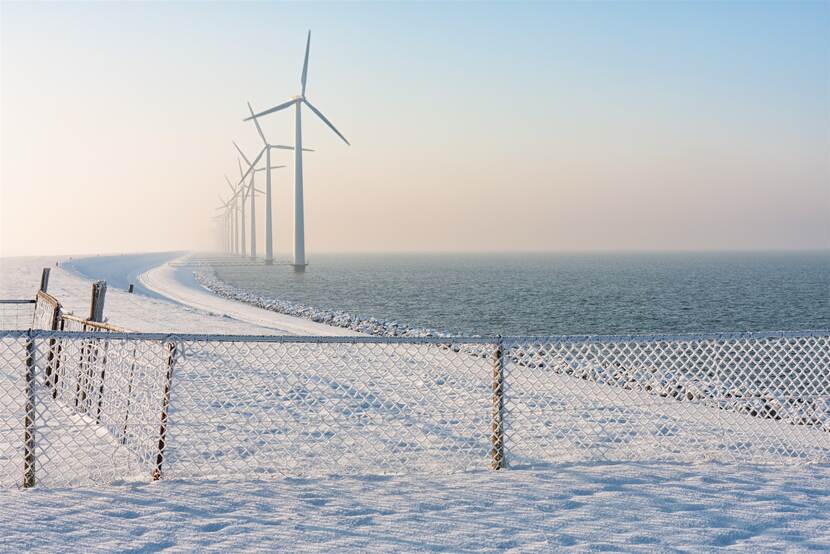
2018: Vibrant cities
Imagine being dropped in the middle of one of our cities, like Amsterdam, Rotterdam or The Hague. What would you experience? You would see hustle and bustle all around. You would have a choice of many fine restaurants and friendly pavement cafes where people meet up for business or pleasure. You would see workers renovating old buildings. You would visit innovative businesses that combine promising ideas with cutting-edge technology. And late at night you could catch an eco-friendly bus or tram to take you back to your comfortable hotel.
In other words, the Dutch economy is flourishing, and has been for several years now. That is why we have chosen ‘vibrant cities’ as the photo theme for the Outlook 2018. This theme has a direct link with the DSTA. Not only is the economy growing, but also, Dutch public finances are in excellent health. Debt levels are falling and the State’s borrowing requirement is decreasing to pre-crisis levels. Overall it is fair to say that life in the Netherlands is full of optimism. And we invite you to take part.

2017: Core values DSTA
The DSTA’s core values of transparency, liquidity and consistency have always been deeply imprinted in every decision, new policy and action taken by the DSTA. This was true in a period of turbulent and challenging market circumstances, such as during the financial crisis. It remains just as important today as stability is returning and the Dutch funding requirement has decreased. In the coming years, new circumstances and insights might demand flexibility and necessitate change. Even so, our core values will remain at the heart of our policies, strategies and operations at all times.
We have chosen to illustrate these core values in the Outlook 2017. Transparency in the form of architecture: from airy greenhouses to bright and modern glass buildings, including our own Ministry of Finance. Liquidity in the obvious and abundant presence of water in the Netherlands: from rivers and streams to small waterfalls and the North sea. Finally, we see consistency in seemingly endless repeating patterns: in highly organised Dutch agriculture, in a line of identical beach cabins, in large amounts of neatly parked bicycles and in rows of cheese wheels waiting to be sold.
2016: Lengthening the portfolio
One of the main goals of the new interest rate risk framework for the period 2016-2019 will be to lengthen the average maturity of the Dutch debt portfolio from 4.5 years at the end of 2014, to around 6.4 years in 2019. With the current historically low interest rate environment, especially for (Dutch) Government bonds, it makes sense to extend the average maturity and thereby lower the interest risks with almost negligible costs. Extending, lengthening and elongating are therefore the main themes of the photo theme of the Outlook 2016.
The Netherlands has a proportionally long coastline when compared to the rest of mainland Europe: the Netherlands ranks seventh after Norway, Denmark, Greece, Finland, Croatia and Sweden. The tallest buildings in the country are situated in Rotterdam with the Maastoren (165 meter), New Orleans (158 meter) and Delftse Poort (151 meter) forming the country’s top 3. The river Meuse (or Maas in Dutch), originates in France and runs through Belgium and the Netherlands. Of its total lenght of 925 km approximately 238 km run though the Netherlands, making it the longest river in the country.
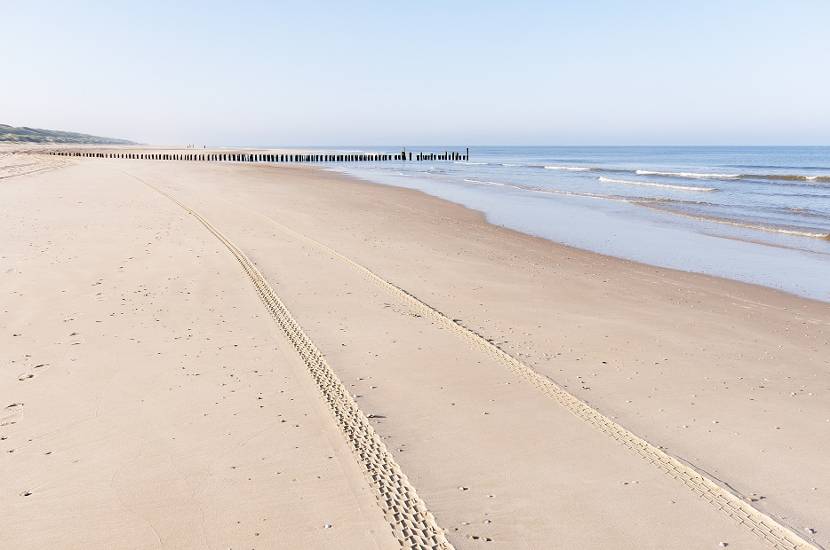
2015: Cloudy skies
The Dutch proverbs: ‘na regen komt zonneschijn’, which means that good things always follow bad things, is in Dutch even more connected to the weather than in English. It has been taken as the main theme of this Outlook. After all the negative economic news of the past years, 2014 has finally shown some hopeful signs of recovery, however precarious. The pictures of Dutch skies in the Outlook 2015 are very cloudy at first and improve during the Outlook. They are a visualization of the improvement of the Dutch economy in the next few years. We are hopeful and believe the Dutch economy to be as water resistant as its inhabitants, who for many decades have struggled and survived, regardless of (economic) hardships or bad weather.

2014: Buildings - combining old and new
In the Netherlands, many beautiful building from the 17th century (or even earlier) have been well preserved. The architectural style was very decorative, as evidenced by the many elaborate embellishments or the characteristic stepped gables, while the thick walls and small windows underline the sturdiness and durability of the construction.In order to showcase the best its architecture through the centuries, many buildings from past eras have a protected status. This necessitates creativity on the part of city planners and modern architects, who need to work around the restrictions associated with such heritage buildings. This often leads to innovative outcomes. The pictures in the Outlook 2014 show examples of such convergence of old and new elements in Dutch architecture.
Similarly, the Dutch economy is based on strong and durable fundamentals. A long history as a major international trading power has laid the groundwork for today’s competitive, export-driven economy. Careful maintenance of these solid fundamentals, including measures to keep public finances sustainable and to equip new generations with skills which will help them succeed in the new economy, will ensure that the Netherlands continue to thrive in the modern world.

2013: Weighing Buildings
The Dutch economy has always been heavily dependent on trade. The collection of pictures in the Outlook 2013 shows various buildings that were traditionally part of a Dutch city’s trading infrastructure. Many of the photographs depict so-called ‘waaggebouwen’. Literally translated, this means ‘weighing buildings’. Merchants were obligated to weigh their produce, such as milk or cheese, at a city’s official weighing building before offering it for sale. In this way, the weighing buildings supported fair and efficient trade. Merchants paid a small fee for the weighing service, which can be regarded as an early form of VAT charges. Most of the buildings shown stem from the seventeenth century, the Netherlands’ ‘Golden Age’, when the United Provinces amassed huge wealth from international trade.

